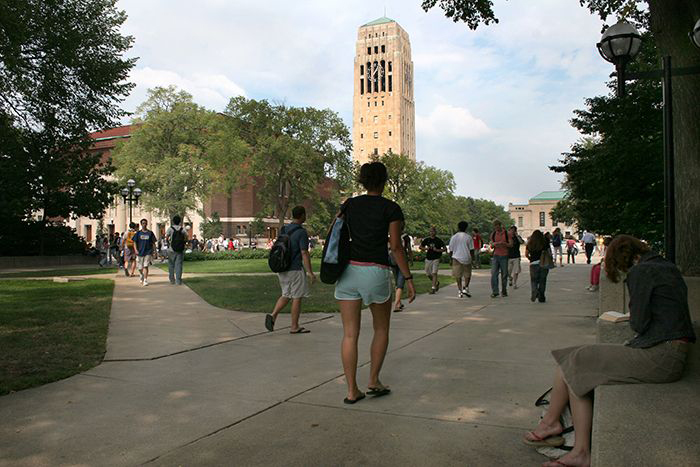
High-achieving, low-income students who received targeted admissions materials are more likely to apply, be admitted to and enroll in a top-tier university, according to a new University of Michigan study.
Research by Susan Dynarski, U-M professor of public policy, education and economics, and colleagues found that with personalized treatments, high school students were twice as likely to apply to U-M (67 percent compared to 26 percent) and twice as likely to enroll (26 percent compared to 12 percent).
"This personalized intervention and follow-up brought students in who were unlikely to attend a highly selective university," Dynarski said. "This is a first-of-its-kind study that proves that a low-cost intervention can have a huge impact on attracting and retaining students, which could transform higher education—and the students who deserve to benefit from it."
The researchers worked with U-M's High Achieving Involved Leaders (HAIL) scholarship program to reach out to low-income, high-achieving students who were uncertain about their suitability at U-M. The research also sought to address overestimates of the cost of college and procedural barriers such as financial aid forms.
In a personalized mailing, students were encouraged to apply to U-M and promised four years of free tuition and fees if admitted—a value of about $60,000, with no requirement to complete financial aid forms. Parents and principals of the eligible students were also personally notified about this offer.
"The vast majority of these students would have gotten at least this much financial aid from U-M if they filled out the financial aid forms on their own," Dynarski said. "The key is that HAIL provided students with certainty about how much it would cost before college applications were due, when it can really make a difference."
For this study, rising seniors across Michigan were identified through high school GPAs and scores on college-entrance exams (ACT or SAT) to select the sample. Forty percent of the schools were in southeast Michigan, where Ann Arbor and Detroit are located; 46 percent of schools were in the west-central region of the state, home to Grand Rapids; and 14 percent of schools were in the largely rural Upper Peninsula.
According to the results of the research conducted at U-M's Gerald R. Ford School of Public Policy, a majority of HAIL-eligible students were female (59 percent) and white or Asian (84 percent). Nine percent were black and 7 percent were Hispanic, native American or native Hawaiian.
The study also found larger treatment effects over the two-year period than over one year.
"If it weren't for HAIL, many of these students would not have gone to college at all or would have attended two-year colleges," said study co-author Katherine Michelmore, an assistant professor at Syracuse University. "Getting students to go to U-M, where retention rates are higher, meant they were more likely to stay in college for at least two years."
Students offered HAIL scholarships are also more likely (11 percent) to be enrolled in a four-year college for at least two years, which is a 20 percent increase (the one-year effect is 9 percentage points, a 14-percent increase). Further, students offered HAIL scholarships are 8 percentage points more likely to enroll in any college for two consecutive years.
"This is a low-cost way to attract students who deserve the opportunity and enrich the classroom but who we otherwise would have missed," Dynarski said.
Other authors of the study are C.J. Libassi of the College Board and U-M doctoral student Stephanie Owen.
HAILed it: Tuition-free Promise Effectively Recruits Low-income Students to University of Michigan was originally published on the University of Michigan website.